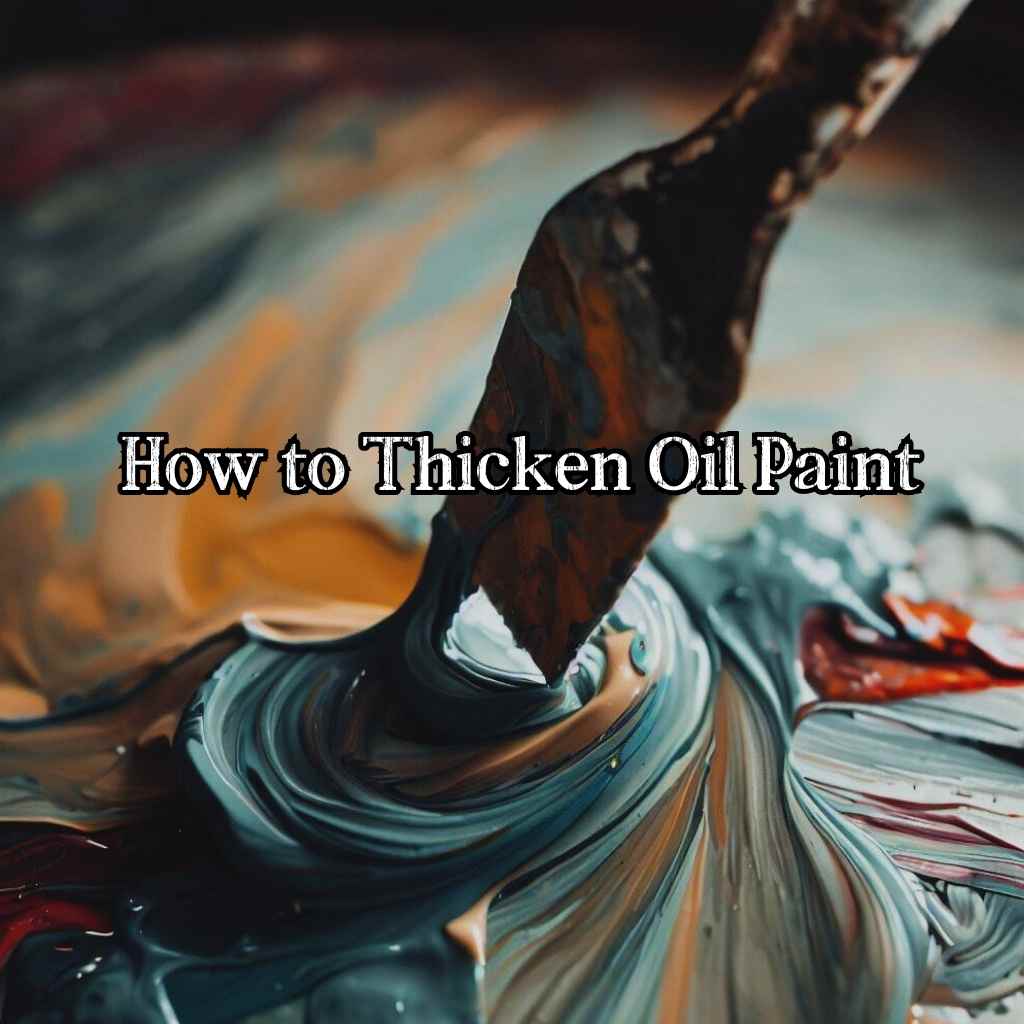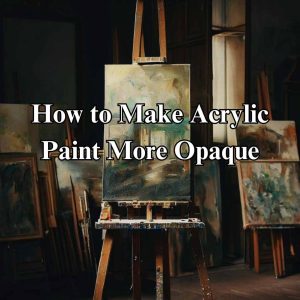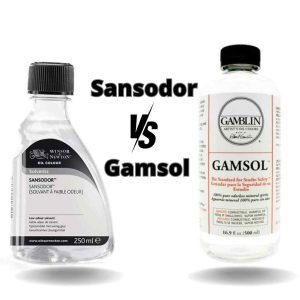Are you an artist yearning to take your oil paintings to the next level? Are you seeking ways to thicken oil paint and add a mesmerizing texture to your artwork?
Look no further! In this comprehensive blog post, we will delve into the captivating world of how to thicken oil paint.
From traditional techniques passed down through generations to innovative modern additives, we’ll guide you on an artistic journey that will awaken your creativity and leave you inspired to experiment.
Get ready to unleash your artistic vision and create masterpieces that exude depth, texture, and allure.
Selecting the Right Oil Painting Mediums
Oil painting mediums are substances that are mixed with oil paint to alter their consistency and drying time. They can be classified into various categories, each with its own characteristics and potential for thickening oil paint.
Overview of oil painting mediums:
- Linseed oil: Increases flow and drying time, and adds transparency and glossiness.
- Walnut oil: Slower drying time, ideal for a matte finish and extended working time.
- Poppy seed oil: Even slower drying time, enhances translucency and luminosity.
- Stand oil: Versatile medium that thickens paint improves flow, and allows for pronounced brushstrokes and impasto effects.
Reasons to Thicken Oil Paint
Thickening oil paint offers a multitude of reasons why artists should consider incorporating this technique into their creative process.
There are various reasons why you should embrace the art of thickening oil paint:
- Enhancing texture and impasto effects
- Increasing color intensity and richness
- Achieving better brushstroke control
- Creating three-dimensional effects
Working with Traditional Thickening Agents
Working with traditional thickening agents is a tried-and-true method for achieving desired thickness and texture in oil paint. These agents have stood the test of time and continue to be favored by artists for their reliability and effectiveness.
- Linseed oil: Derived from flaxseed, it thickens paint while enhancing drying time and providing a glossy finish.
- Stand oil: A versatile medium that thickens paint improves flow, and offers a durable, glossy finish.
- Beeswax: Adds body and thickness, creating unique textural qualities and an impressive impasto effect.
- Dry pigments or powdered fillers: Dry pigments or powdered fillers can be added to oil paint to increase its thickness. This method allows you to customize the consistency and achieve specific textural effects.
- Other natural substances: Artists experiment with natural resins, gums, and substances like damar resin or mastic gum to enhance viscosity and durability.
Traditional thickening agents provide control over consistency and drying time, allowing artists to achieve desired effects. Incorporating these agents into the artistic process unleashes creativity, explores new possibilities, and creates artworks with captivating and textured surfaces.
Exploring Modern Oil Painting Additives
In addition to traditional thickening agents, modern oil painting additives offer a wealth of options for artists to experiment with, pushing the boundaries of texture and viscosity in their oil paint.
Gel mediums and their impact on viscosity
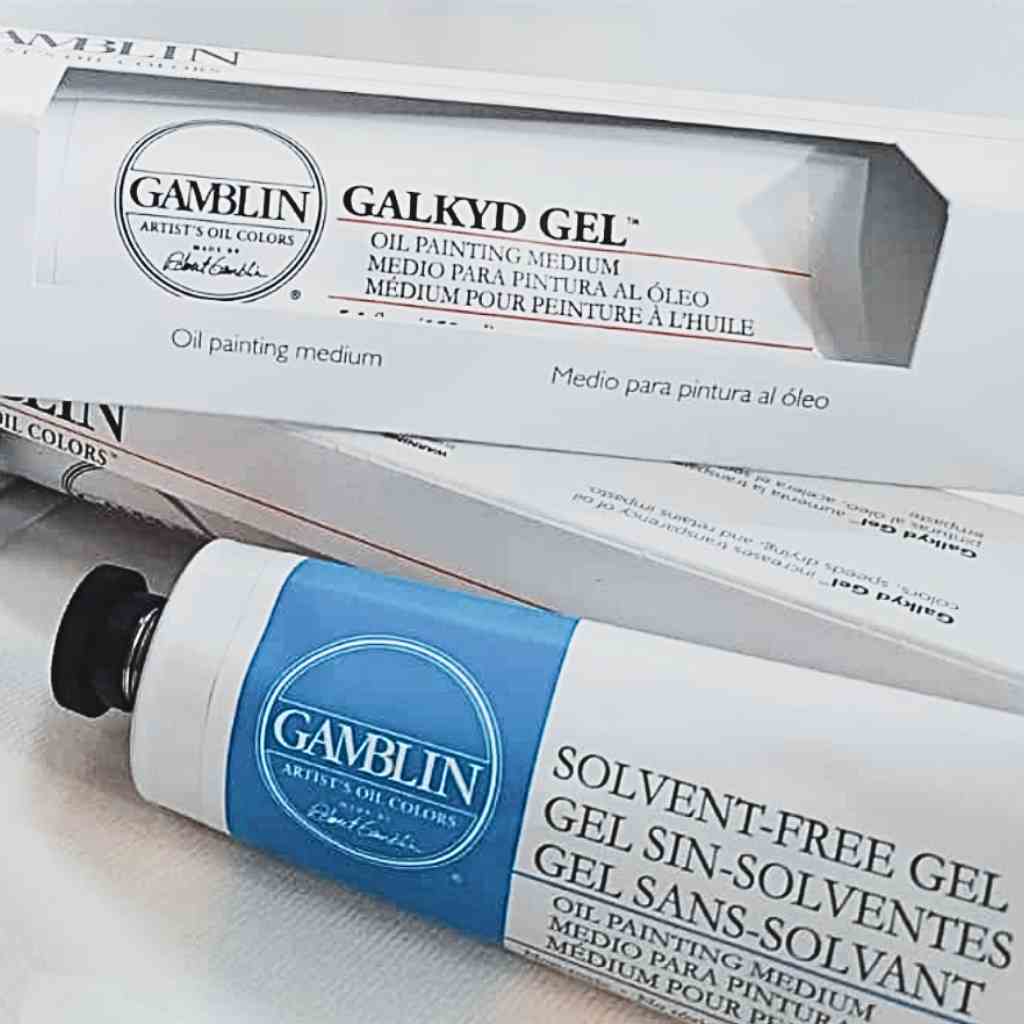
One popular category of modern additives is gel mediums. Gel mediums are thick, translucent substances that can significantly impact the viscosity of oil paint.
By incorporating gel mediums into their paint, artists can achieve bold and pronounced textures, creating a three-dimensional quality on the canvas. Gel mediums come in different viscosities, allowing artists to choose the level of thickness they desire.
Whether it’s a heavy body gel medium for extreme texture or a soft gel medium for subtle impasto effects, these additives provide artists with a wide range of possibilities for manipulating the consistency of their oil paint.
Wax mediums: creating texture and thickness
Another modern additive that artists have embraced is wax mediums. When mixed with oil paint, wax mediums create a lush and thick consistency, adding depth and richness to the artwork.
These mediums often contain a combination of beeswax, damar resin, and other ingredients that enhance the paint’s viscosity while providing a smooth and buttery texture.
Wax mediums can be layered or blended with paint, enabling artists to achieve a range of effects, from subtle transitions to pronounced texture. With wax mediums, artists can elevate their oil paintings to new levels of visual and tactile appeal.
Acrylic gels and their compatibility with oil paint
In recent years, there has been an increasing interest in the compatibility of acrylic gels with oil paint. Acrylic gels, commonly used in acrylic painting, offer unique properties that can be harnessed by oil painters.
When combined with oil paint, acrylic gels can add body and thickness, altering the consistency of the paint. These gels come in various forms, such as heavy gels, gloss gels, or modeling pastes, each with its impact on the viscosity and texture of the oil paint.
Artists who are open to experimenting with different mediums can explore the exciting possibilities that arise from the combination of oil paint and acrylic gels.
It is worth noting that when working with modern additives, artists should carefully consider the compatibility of the materials they are using.
Some additives may alter the drying time or characteristics of the paint, so it is advisable to conduct tests and experiments beforehand to understand the effects they will have on the final artwork.
Additionally, proper knowledge of the drying times and archival qualities of these modern additives is essential to ensure the longevity and stability of the artwork.
Experimenting with Non-Traditional Substances
Are you a daring artist ready to push the boundaries of convention and explore unconventional paths in your oil painting journey? We should step outside the bounds of convention and explore new avenues in our artistic journey.
Using calcium carbonate or cornstarch as a thickening agent
Common household items like cornstarch or chalk can act as natural thickening agents for oil paint. These additives can be mixed with the paint to increase its thickness and alter its handling characteristics. Artists can achieve a unique body and texture in their artwork.
Mixing the thickening agent with oil paint:
Add the chosen thickening agent to your oil paint, stirring thoroughly to ensure even distribution. Adjust the amount added based on the desired consistency and texture.
Assessing and refining the paint consistency:
Apply a small amount of the paint mixture to a sample surface and evaluate its thickness, spreadability, and drying time. Make any necessary adjustments by adding more thickening agents or oil paint to achieve the desired outcome.
Exploring commercial thickeners and their effectiveness
These specialized products are designed to push the boundaries of viscosity, allowing artists to customize the texture of their oil paint with precision and control. Exploring different commercial thickeners offers artists the opportunity to experiment and achieve desired effects in their artwork.
How to use commercial thickeners
To use commercial thickeners effectively, follow the instructions provided by the manufacturer. Generally, you would add the recommended amount of the thickener to your oil paint and mix thoroughly until the desired consistency is achieved.
It’s advisable to start with a small amount and gradually increase it if necessary, as different brands and products may have varying levels
Recommendations
When it comes to recommending specific commercial thickeners, several notable options are available in the market.
One popular choice is Liquin Impasto by Winsor & Newton, which is known for its ability to create thick, textured layers in oil paintings.
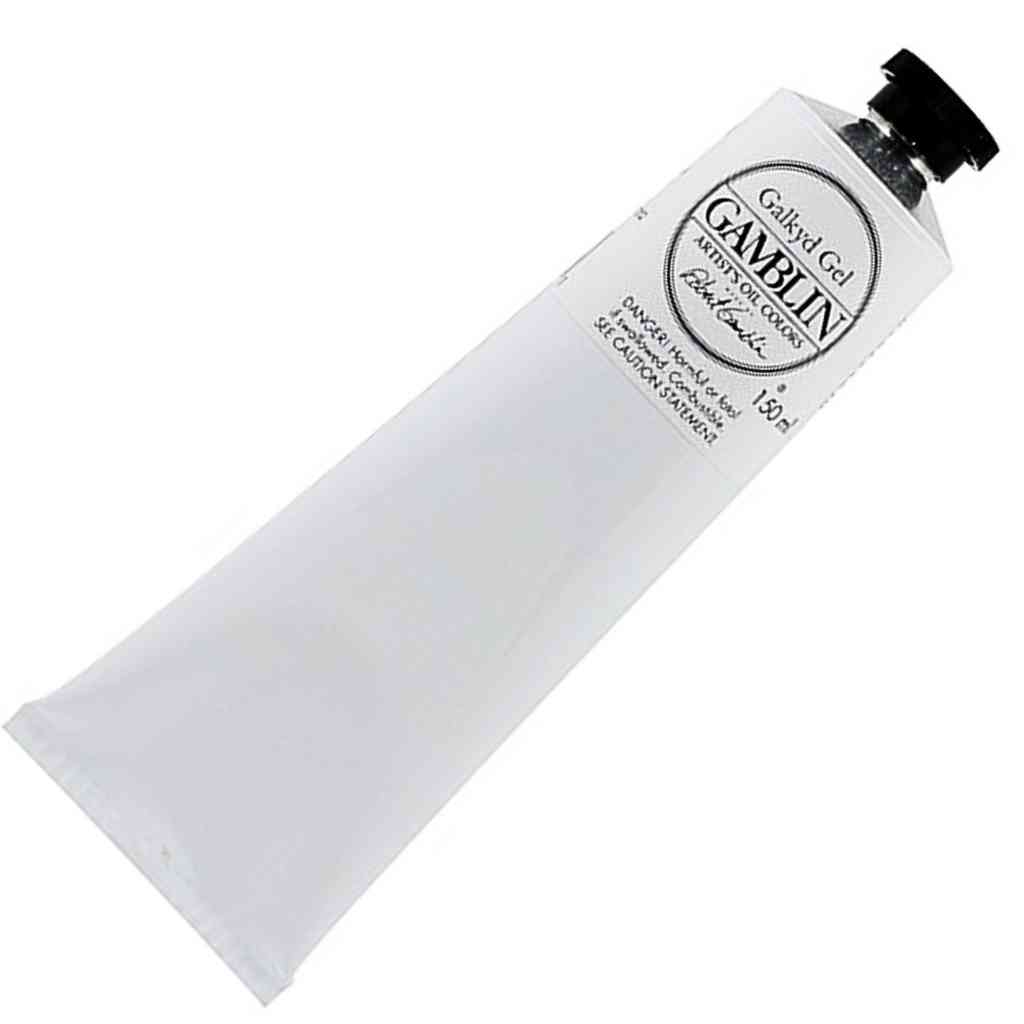
Another well-regarded product is Galkyd Gel by Gamblin, which offers a soft gel consistency that extends the working time and enhances translucency.
Both of these commercial thickeners have received positive feedback from artists and can be excellent choices to explore.
Silicone oil: a unique approach to thickening oil paint
Silicone oil is a unique approach to thickening oil paint. Though unconventional, silicone oil opens up new possibilities for artists. By incorporating it into their oil paint, artists can create mesmerizing textures and achieve a glossy finish that captivates the viewer’s eye.
Mixing silicone oil with oil paint:
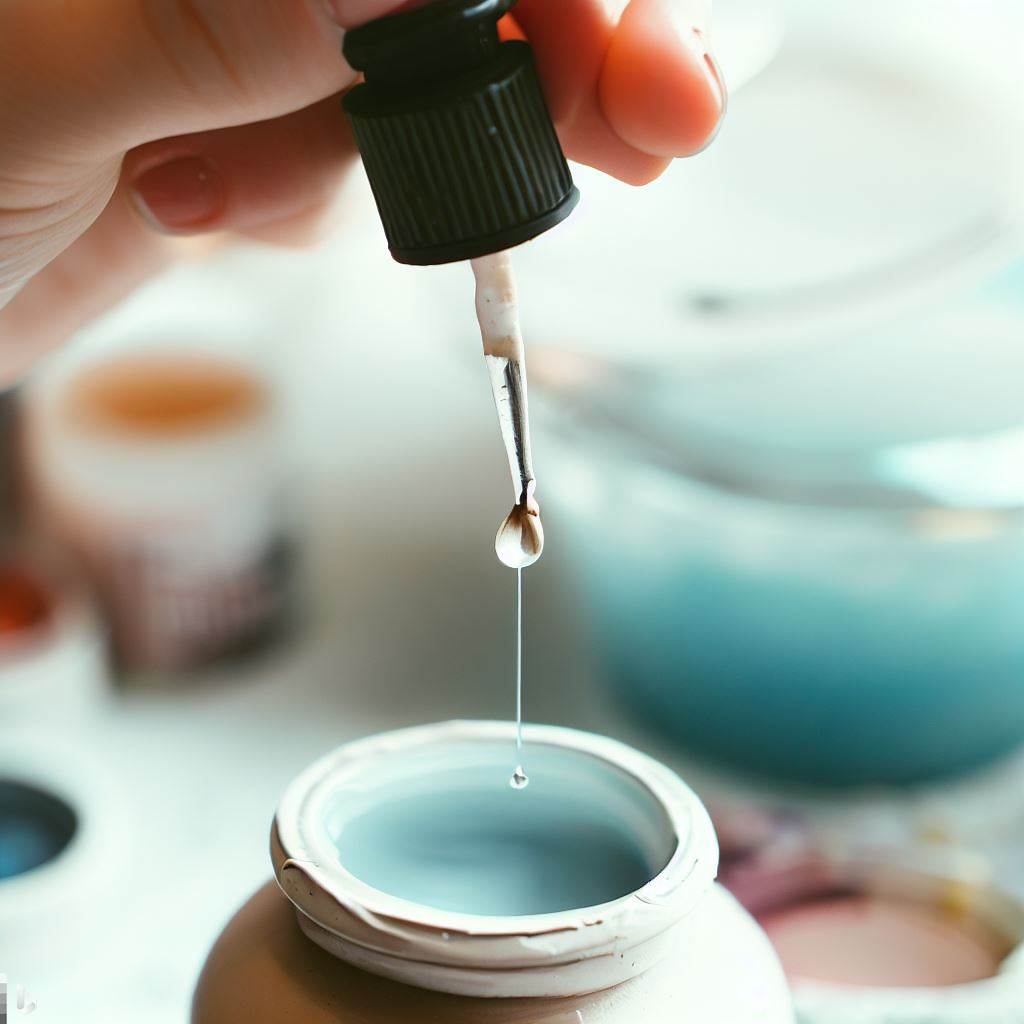
Using a clean palette knife or a dropper, add a small amount of silicone oil to the oil paint. Start with a conservative amount and gradually increase if desired. Before applying the mixture to your artwork, it’s recommended to test it on a sample surface or canvas board.
Techniques for Thickening Oil Paint
In the realm of thickening oil paint, mastering various techniques is key to achieving the desired texture, depth, and visual impact in your artwork.
Here are some of the techniques that can elevate your oil paintings to new heights.

- Mixing oil paint with a palette knife: A palette knife is a versatile tool that allows you to blend oil paint with precision and control.
By mixing paint with a palette knife, you can create thick, impasto effects and build up texture on the canvas. The firmness of the palette knife enables you to manipulate the paint and achieve desired thickness in specific areas of your artwork.
- Gradually adding thickening agents: When working with traditional or modern thickening agents, it’s important to add them gradually to the oil paint. This approach ensures that you have control over the consistency and can make adjustments as needed.
Whether it’s traditional mediums like linseed oil or modern additives like gel mediums, adding them incrementally allows you to achieve the desired level of thickness without overdoing it.
- Layering techniques for creating texture and depth: Layering is a fundamental technique in oil painting, and it can also contribute to thickening the overall appearance of your artwork.
By applying multiple layers of paint, you can build up texture and depth, creating a visually captivating surface. Varying the thickness of each layer adds dimension and richness to your work, making it more visually engaging.
- Using brush techniques to enhance thickness: Brushwork plays a crucial role in oil painting, and specific brush techniques can help enhance thickness. For example, using a dry brush technique, where you use a brush with little or no paint, allows you to add texture and create rough, textural surfaces.
Additionally, employing techniques like stippling, cross-hatching, or applying paint in thick, bold strokes can add visual weight and thickness to your brushwork.
Troubleshooting Common Issues
Even the most skilled artists encounter challenges when working with thickened oil paint. However here are some troubleshooting common issues that may arise during your artistic journey-
Preventing excessive drying time
Thickened oil paint may take longer to dry than regular paint, which can be problematic if you’re working on a tight schedule. To overcome this, consider using mediums or additives that enhance drying time.
Additionally, ensure proper ventilation in your workspace to promote airflow and facilitate the drying process.
Avoiding cracking and other texture-related problems
Thick layers of paint can be prone to cracking or developing unwanted textures. To minimize these issues, make sure each layer is thoroughly dried before applying subsequent layers.
Additionally, avoid applying thick paint over a flexible surface, as it can lead to cracking over time.
Adjusting consistency when over-thickening occurs
Sometimes, artists may accidentally over-thicken their paint, resulting in a texture that is too stiff or difficult to work with. If this happens, you can rectify the situation by gradually adding a medium or thinner to the paint to achieve a more manageable consistency.
Remember to add the thinner incrementally, mixing thoroughly as you go.
Clean the brushes and palettes after using thickening agents
Thickening agents can leave residue on your brushes and palettes, making cleanup challenging. To ensure proper cleaning, rinse your brushes with an appropriate solvent or cleaner immediately after use.
Use a palette knife to scrape off excess paint from the palette, followed by a thorough cleaning with soap and water or a dedicated palette cleaner.
FAQs
- Can I mix different types of thickening agents together?
Mixing different types of thickening agents can be done, but it’s important to consider their compatibility and the desired outcome. Some combinations may work well together, while others may not. It’s recommended to experiment on a small scale and perform tests to observe how the different agents interact before applying them to your main artwork.
- Can I reverse the thickening process if my paint becomes too thick?
If your oil paint becomes too thick, you can add a thinner or medium to adjust the consistency. Gradually add small amounts of the thinner or medium, mixing thoroughly until you reach the desired thickness. Remember to proceed slowly and test the paint’s consistency as you go to avoid over-thinning.
- Can I use thickened oil paint for different art techniques, such as glazing or wet-on-wet painting?
Thickened oil paint is commonly used for techniques that require texture and impasto effects. However, it may not be suitable for glazing or wet-on-wet techniques as those methods typically require thinner paint layers. It’s important to choose the appropriate consistency and techniques based on the specific artistic effect you wish to achieve.
- Are there any risks of cracking or aging associated with thickened oil paint?
When using thickened oil paint, there is a possibility of cracking if the layers are applied too thickly or if the paint is not properly mixed with the thickening agent. It’s important to ensure a balanced application, allowing each layer to dry sufficiently before adding additional layers. Additionally, using quality materials and following proper storage and preservation practices can minimize the risks of cracking and aging.
- Are there any specific considerations when using thickened oil paint for outdoor or plein-air painting?
When using thickened oil paint for outdoor or plein air painting, it’s essential to consider the environmental conditions. Thicker paint layers may require more time to dry in humid or colder conditions. Additionally, ensure that your painting surface and supports are suitable for outdoor use and can handle the additional weight and texture of thickened paint.
- Can I use thickened oil paint for underpainting or as a base layer in my artwork?
Yes, thickened oil paint can be used for underpainting or as a base layer in your artwork. The added texture and body of the paint can provide a solid foundation and create interesting effects when subsequent layers are applied. Consider the desired outcome and adjust the thickness and application techniques accordingly to achieve your artistic vision.
Conclusion
We’ve reached the final strokes of our artistic journey, where we conclude our exploration of how to thicken oil paint with a triumphant finale.
Throughout this enlightening odyssey, we’ve delved into the depths of artistic expression, unlocking the secrets to adding depth, texture, and dimension to our precious creations.
Armed with a plethora of techniques, mediums, and additives, you possess the tools to bring your artistic visions to life. So go forth, brave creatives, and let your brushstrokes dance upon the canvas, breathing life into your imagination.

